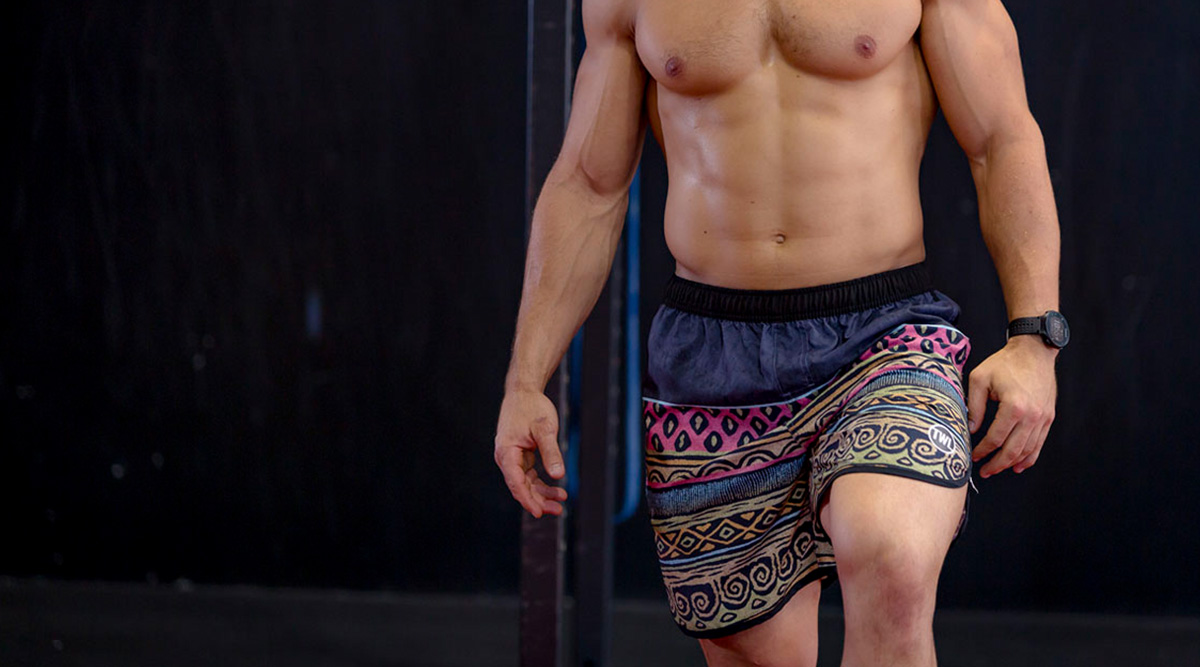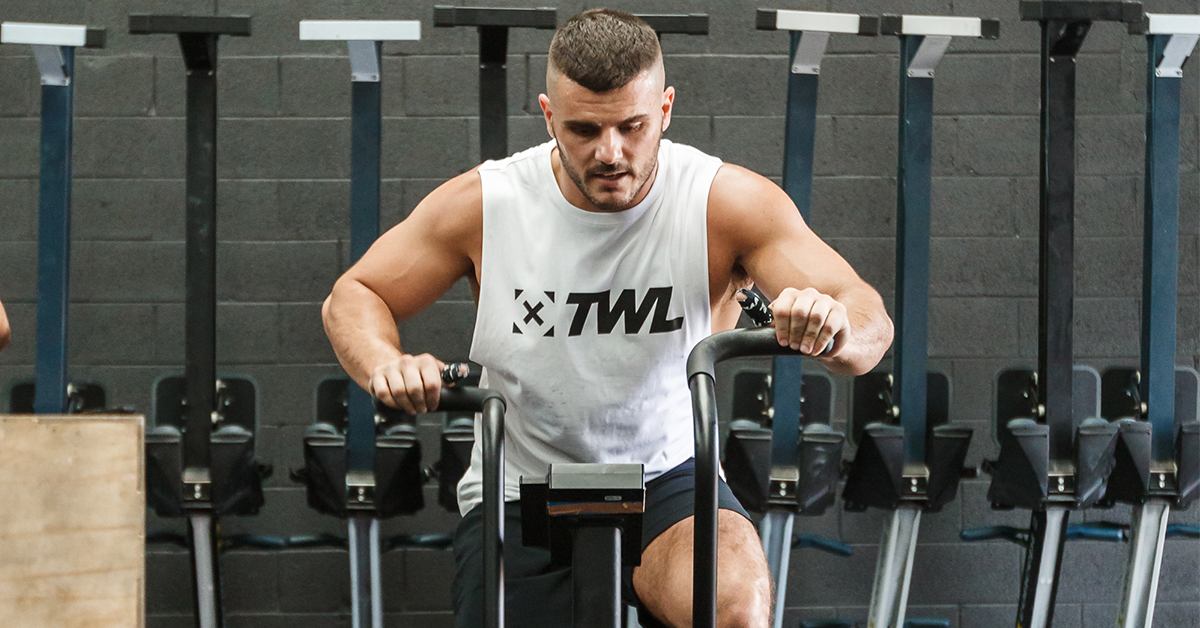There are a lot of reasons why we work out. It has mood-boosting, muscle-gaining, fat-burning, and health-improving benefits, after all. Many of us have multiple goals at once, such as get improved confidence, have a booty like Brooke Wells, lose body fat, and lower cholesterol markers. Luckily, most of our goals go hand in hand. However, the goal combo that reigns supreme, the holy grail of fitness goals — build muscle without gaining fat — at the same time, seems to be a little conflicting.
After all, when you are trying to lose fat, you are trying to get rid of some of your body mass, but when you are trying to gain muscle, you are looking for the opposite. So it makes sense to wonder if you can really add muscle mass at the same time that you are losing fat.
Surprisingly, according to experts and research, the answer is yes. But it is tricky — like hitting the HSPU standard from 18.4 kind of tricky — and requires a strategic approach.
How to Build Muscle Without Gaining Fat
Muscle gain happens when your body has more building materials (calories and nutrients) than it needs for basic upkeep, like breathing, peeing, and moving, so it adds to your body’s stores structures. Fat and weight loss, on the contrary, happen when your body is short on those materials — meaning you are consuming fewer calories than the number of calories you are burning — and your body has to dip into its own structures and stores for fuel.
But let’s make one thing clear: if you are looking to lose fat and gain muscle, you need to be tracking the fat loss, not weight loss. That means the scale is not the right tool for this job. In fact, the number on the scale might not budge, or it might even go up, even if your body is changing dramatically.
Is that because muscle weighs more than fat? Kind of. A pound of fat and a pound of muscle weigh exactly the same. (It sounds obvious now, but how often have we heard that muscle weighs more than fat?) However, and this is where the confusion comes in, the volume of muscle is denser and more compact. It would take about four pounds of muscle to fill the space of one pound of fat.
Caloric Intake and Diet Plan
Another issue with thinking about fat loss as weight loss is that calorie cutting is usually the strategy for losing pounds. But restricting calories too much for your muscle-building and fat-losing goal can actually sabotage your efforts. Any drastic changes in calorie intake will make your body compensate metabolically to “defend” your initial body weight. Basically, it causes your body to go into preservation mode.
A major part in reaching both of these goals is fueling right. Keep in mind your individual caloric needs will vary depending on your size, activity level, and how much fat you want to lose. For specifics, it is best to talk with a registered dietician to come up with a personalized eating plan.
But as a general rule, Grayson Wickham, D.P.T., C.S.C.S., founder of Movement Vault, a mobility and movement company, suggests paying attention to your fat and protein intake. Too little protein or too much fat may interfere with your ability to build muscle. (ICYDK, when you do strength training exercises, such as lifting weights, you create small tears in your muscle fibers. When you rest, your body repairs those microtears, building up your muscles bigger and stronger than they were before, but it needs protein to do it.) A diet rich in fiber, healthy fats, and lean proteins has been shown to be key to fat loss.
For this 2-in-1 goal, you need to hit the sweet spot, and that sweet spot includes a lot of protein. One McMaster University study split 40 men into two groups. Both groups went on a low-calorie diet, one with higher levels of protein than the other (2.4 versus 1.2 g/kg body weight/day). The higher-protein group was able to gain about 2.64 pounds of muscle and lose 10.56 pounds of fat in four weeks, but the lower-protein group did not gain any muscle and lost only eight pounds of fat. It is also worth noting both groups did workouts focused on strength training and HIIT.
The researchers do caution this regime may not be for everyone: “We designed this program for overweight young men, although I’m sure it would work for young women too, to get fitter, stronger, and to lose weight fast. It’s a tough program and not something that’s sustainable or for those looking for a quick and easy fix,” they said.
But before you start swallowing back hard-boiled eggs and chugging protein shakes, keep in mind that a few studies (see also this) have shown a very high-protein intake does not lead to better results.
Instead, use this simple formula to figure out how much protein you should get. The International Society of Sports Nutrition recommends between 1.6 and 2.2 g protein/kg body mass/day for optimal muscle growth. So, multiply your weight in kilograms by 1.6 and 2.2 to get a range of your personal recommended protein intake for muscle growth and recovery.
While you are thinking about protein, instead of eating it all in one sitting, try to distribute it throughout the day. This may enhance the muscle-building effects. To get really specific, one review found consuming 0.4 to 0.55 g/kg of body weight at each meal is best.
Okay, now it is time to talk about the second piece of the puzzle — exercise.
Training and Exercise Plan
If building muscle and losing fat is your goal, this is non-negotiable: “If you want to build muscle on top of burning fat, you need to incorporate resistance exercises into your routine,” said Wickham. Cardio needs to take a back seat.
Why? To build muscle, you need a training plan that focuses on strength training (which also boosts your metabolism and therefore promotes fat loss). “Your plan should include weighted, full-body, compound exercises (which basically incorporate multiple joints in the body at once) like squats, deadlifts, and overhead press,” said Wickham. “These support both muscle gain and calorie burn because they have a high-energy expenditure,” he said.
How much you work out will depend on how much muscle you want to build, but Wickham suggested that you try to work each major muscle group at least twice a week, including lower-body movements such as squats and deadlifts, pushing exercises such as push-ups and bench press, and pulling exercises such as rows and pull-ups. He also said accessory work is beneficial.
“And if you do include cardio, it should be interval training,” said Wickham. In fact, one study found just one month of HIIT training helped rowers decrease their body fat percentage, whereas traditional rowing had no effect.
The last step? Patience. These results won’t happen overnight. It takes time (like several months) to significantly change your body, and you need to be consistent with your strength training and eating plan to get the results you want. Even then, “some people will see results faster than others due to things like genetics, sleep, hormones, lifestyle, and more,” said Wickham. And remember: even if it seems downright impossible at times, it’s not.














